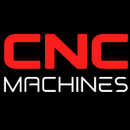Exploring Rotary Steerable System Components: History, Manufacturing, and Modern Applications in the Oil and Gas Industry

Exploring Rotary Steerable System Components: History, Manufacturing, and Modern Applications in the Oil and Gas Industry
In the oil and gas sector, drilling technology has evolved significantly, enabling operators to reach reservoirs located kilometers away from the wellhead. A major breakthrough in directional drilling is the Rotary Steerable System (RSS)—a sophisticated assembly that facilitates precise steering while maintaining continuous drill string rotation. Below, we delve into the origins of rotary steerable systems, how they’re manufactured, and their application in today’s energy landscape.
A Brief History of Rotary Steerable Systems
Early Directional Drilling
Directional drilling concepts emerged in the early 20th century. Initially, drillers used slanted wellbores or whipstocks to deflect the bit. The 1970s and 1980s saw the rise of downhole motors, which separated bit rotation from the drill pipe, allowing controlled directional changes.
The Rise of RSS
In the 1990s, a need for continuous rotation during steering became apparent—primarily to reduce friction and increase drilling efficiency. This led to the development of rotary steerable systems. Companies like Schlumberger, Halliburton, and Baker Hughes pioneered these tools, integrating sensors, motors, and control electronics to steer the wellbore without pausing rotation.
Modern Advancements
By the 2000s, RSS technology had matured, supporting extended reach drilling (ERD) and complex well trajectories. Integration with Measurement While Drilling (MWD) and Logging While Drilling (LWD) tools made real-time steering decisions possible, reducing drilling risks and enabling precise reservoir contact.
Core Applications
- Extended Reach Drilling (ERD): Operators can drill horizontal sections extending several kilometers from a single surface location, maximizing reservoir exposure and minimizing environmental footprint.
- Multilateral Wells: RSS technology enables branching from a main wellbore into multiple laterals, increasing reservoir drainage and enhancing overall productivity.
- Geosteering: Real-time measurements guide the bit toward optimal hydrocarbon-bearing layers, mitigating the risk of drilling outside the target zone.
- Directional Control in High-Dogleg Wells: With the ability to make tighter turns while rotating, RSS tools reduce time spent sliding and optimize weight-on-bit for faster drilling rates.
Rotary Steerable System Components
A rotary steerable assembly typically comprises:
- Steering Unit (Actuator): The heart of the RSS, this mechanism adjusts the bit’s inclination or azimuth on-the-fly, often using pads or push-the-bit/pull-the-bit force vectors.
- Downhole Electronics and Sensors: Integrated accelerometers, magnetometers, and gamma ray detectors feed real-time data to surface operators, aiding directional decisions.
- Power Section: Some RSS designs rely on turbines or mud motors to power steering mechanisms; others draw energy from the rotating drill string itself.
- Communication Sub: Connects the RSS to MWD/LWD systems, transmitting data via mud pulse telemetry or other communication methods to the rig floor.
- Drill Bit: The choice of bit (e.g., PDC or roller-cone) complements the RSS; bit design can influence steering responsiveness and build rates.
How RSS Components Are Made
- Material Selection: High-strength steels, nickel-based alloys, and corrosion-resistant coatings are essential to endure downhole pressures, temperatures, and abrasive drilling fluids.
- Precision Manufacturing: Computer Numerical Control (CNC) lathes and mills cut intricate geometries for housing sections, actuator pads, and fluid channels with close tolerances.
- Electronics and Sensor Integration: Sensitive accelerometers, magnetometers, and telemetry modules are sealed within robust pressure housings.
- Assembly and Testing: Parts undergo heat treatments (e.g., quenching, tempering) and Non-Destructive Testing (NDT) to verify structural integrity, followed by pressure tests.
Modern Energy Applications
- Unconventional Resources: In shale and tight reservoirs, precise geosteering is vital to maximize hydrocarbon flow.
- Offshore Drilling: Deepwater and ultra-deepwater projects benefit significantly from RSS technology.
- Carbon Capture and Storage (CCS): Precise drilling into specific geological formations for CO₂ injection or monitoring wells becomes essential.
- Enhanced Geothermal Systems (EGS): Directional drilling in geothermal projects improves geothermal power output.
Advantages of RSS Technology
- Continuous Rotation: Minimizes stuck pipe incidents and lowers friction compared to slide drilling.
- Real-Time Steering: Operators can adjust well trajectory based on formation responses, reducing drilling risks.
- Improved Rate of Penetration (ROP): Drilling progresses faster, saving rig time.
- Complex Well Architectures: RSS tools permit intricate well paths, including multilateral and high-build rate designs.
Future Developments
- Autonomous Drilling: Integration with AI-driven software could enable closed-loop systems.
- Better Power Efficiency: Innovations in downhole power generation will enhance reliability.
- Advanced Sensor Suites: More robust sensors will refine geosteering techniques and boost reservoir understanding.
Conclusion
Rotary Steerable Systems (RSS) have revolutionized directional drilling, providing operators with a powerful toolkit for exploring complex reservoirs and extending well reach. From early roots in directional control to modern precision CNC-machined components and integrated sensors, RSS tools are indispensable in today’s oil and gas operations. As the industry leans toward deeper wells, tighter targets, and alternative energy solutions, RSS technology will continue to evolve—pushing the boundaries of what’s possible underground.


